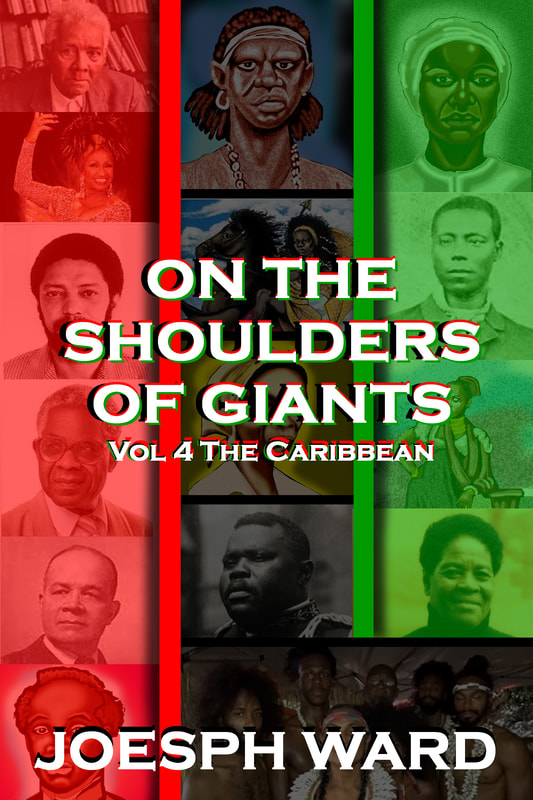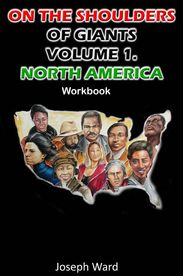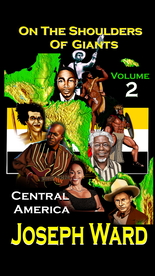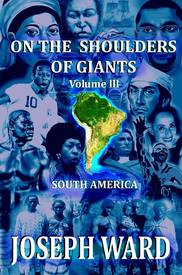|
In 1827, a black woman enslaved in Norfolk, Virginia gave birth to a baby boy named John P. Parker. The father of John P. Parker was a white aristocrat in the state of Virginia. At the age of eight, Parker was sold away from his mother to a plantation in Richmond, Virginia for six months, before being sold again to a plantation in Mobile, Alabama. Parker and other people sold to the plantation in Mobile were chained together and walked from Richmond, Virginia to Mobile Alabama. Only being eight years old, John P. Parker experienced slavery, was sold away from his mother, and chained to other enslaved people forced to walk 860 miles. Once Parker reached Mobile, he was purchased by a physician to work as a house servant. Parker became friends with the physician’s sons, who taught John Parker to read. They would sneak books from their father’s library for Parker to read, helping him increase his intellectual capacity, eventually making him unfit to be enslaved. By the age of 13, Parker became the apprentice to the physician in an iron foundry as an iron molder. In 1843, Parker attempted to attend college with the physician's sons but was brought back to Mobile by the physician, he feared that Parker would use the information he learned to escape slavery. Parker became a very skilled Iron molder but he also wanted his freedom. He attempted to escape the physician's plantation but was caught and returned. Parker was also known for clashing with other workers within the iron foundry. As a result, the physician sold parker to a foundry owner in New Orleans. Not long after working at the foundry in New Orleans, Parker began having issues with fellow foundry workers again. To avoid working the fields in New Orleans, and decreasing his chance to buy his freedom, Parker found a way to eliminate his issues with other workers in the foundry. Despite changing how he interacted with fellow foundry workers, Parker’s owner was still considering selling him. Parker devised a plan to gain his freedom that included convincing a white woman named Elizabeth Ryder to purchase him. Parker was sold to Ryder, but little did the slave owner know, that Ryder purchased Parker with Parker’s own money. The transaction made Parker a free man. With his freedom papers, Parker traveled North to Indiana, and then to Cincinnati, where he began working in a foundry and helping black people escape slavery via the Underground Rail Road. In addition to working in a foundry, Parker also worked as a barber. As a conductor on the Underground Rail Road, Parker helped many black people reach the North using the Ohio River. He was known for traveling the river South into Kentucky bringing people back to freedom. There are stories of Parker fighting off slave masters, helping young black girls travel the Ohio River, and even sneaking into a slave owner's home to take a baby, so its parents could escape their plantation without the child being used to hold them hostage. Parker moved from Cincinnati to Beechwood Factory, Ohio in 1848 where he opened and operated a general store for two years. Parker also married a woman named Miranda Bolden in 1848, the couple produced eight children. He moved to Ripley, Ohio in 1850 where he worked at a local foundry and also worked with the abolitionist Reverend John Rankin, continuing as a conductor on the Underground Rail Road. Between 1850 and 1863, John P. Parker helped over 1,000 black people gain their freedom. Parker did partner with other abolitionists, but he avoided working with church groups because he didn’t think they could ultimately be trusted. In 1854, Parker used the iron molding skills he gained at the age of 13 to found his own iron foundry, the Ripley Foundry and Machine Company, where he molded iron; created plaster moldings; and manufactured and repaired side valve engines. In 1863, Parker along with a number of black men joined the Union Army. Parker was assigned to be a recruiter for the 27th Regiment U.S. Colored Troops until the Union won the Civil War. In 1871, Parker along with a man named William Hood founded the Phoenix Foundry, a business that lasted until 1889. Between the years 1871 and 1889, the Phoenix Foundry was able to employ around 10 and 25 black employees. During that same time span, Parker was named the 27th wealthiest person in Ripley, Ohio. Parker was not only a business owner and abolitionist, but he was also an inventor. He patented the tobacco press in 1884, the portable tobacco press in 1885, and the soil pulverizer in 1890. He also earned money with his flour milling business in 1884. In 1889, the building the foundry occupied burned down, the building was also Parker's home. He soon rebuilt his home and his business, he renamed the business the J.P. Parker Foundry, a business that lasted until 1890. John P. Parker died in Ripley, Ohio in 1900. His life and legacy were honored by restoring his home and converting it into a museum and historic landmark in 1997, by the John P. Parker Historical Society. His autobiography, His Promised Land: The Autobiography Of John P. Parker, Former Slave And Conductor On The Underground Railroad, was published in 1996. The Opera “Rise To Freedom” was inspired by Parker's life, and the John P. Parker School was established in Cincinnati, Ohio. To Mr. John P. Parker, we proudly stand on your shoulders. J.A. Ward Click here to support the OTSOG book series. References: https://www.blackpast.org/african-american-history/parker-john-p-1827-1900/ https://aaregistry.org/story/john-p-parker-abolitonist-and-inventor/ https://www.uh.edu/engines/epi1521.htm https://ohioarchaeology.org/component/content/article?id=99:underground-at-the-underground-railroad-testing-at-john-p-parkers-house
0 Comments
In 1744, a Peruvian woman named Josefa Puyucahua Sisa gave birth to a baby girl named Micaela Bastidas Puyucahua, the father of the baby was a man named Manuel Bastidas. Details on Manuel’s life are not clear, some scholars believe he was an African man, other scholars believe he was a priest. Because of the uncertainty of Manuel’s life, Micaela is believed to be of mixed Indigenous Peruvian and African origins, but it is not confirmed. Micaela was born in the Pampamarca province of Canas, Peru. Within the Pampamarca province Micaela was considered a illegitimate child because of the possibility of her being mixed race, as a result, she was called a Zamba. She was often described as “a very beautiful Indian girl” who had very little education, she wasn’t very fluent in Spanish, her indigenous language which was Quechua. Because of Spanish occupation in Peru, Micaela, like other Peruvians had become devout Christians instead of continuing her indigenous spiritual system. At the age of 16, Micaela married a man named Jose Babriel Condorcanqui, who is better known as Tupac Amaru II, the legendary Peruvian freedom fighter. Tupac Amaru II was a descendent of the great Tupac Amaru I, a monarch of the last Incan state and freedom fighter in Peru. Tupac Amaru II, like Micaela was of mixed race, and in 1764, he became the chief of the Peruvian territories that include the Pampamarca, Tungasuca, and Surimana districts. Tupac and Micaela’s marriage was positive and fruitful, the couple produced three sons and became a very prosperous family. As Tupac and Micaela’s wealth grew, Tupac noticed that his people were not prospering, in fact, they were experiencing poverty and oppression which led to revolts by the Peruvian people. Soon after, Tupac decided to join his people in revolt against the Spanish, Micaela was right by his side ready to fight. Micaela and Tupac had rebelled against the Spanish for a number of years before the year 1780, which was the year the rebellion of Tupac Amaru II began. Tupac and his rebels were able to overtake the Tungasuca region of Peru. During the overtaking of Tungasuca, Tupac, Micaela, and the rebels defeated the Spanish commander Antonio de Arriaga and then hung him. To give themselves an advantage against the Peruvians, the possession of weapons was outlawed, so the Peruvians had to obtain weapons and other resources by raids of Spanish camps. Micaela was in charge of the supplies and logistics for the rebels. She mapped out routes to travel, made sure the rebels had food and supplies, managed and distributed money, obtained and distributed weapons, organized systems of communication, and even fought in battle. As Micaela, Tupac, and the rebels gained victories over the Spanish, they would free Peruvians that were being oppressed by the Spanish. Micaela and a woman named Aymara established a program to help Peruvian women who were traumatized by the Spanish reincorporate back into Peruvian society. The rebels gained an important victory over the Spanish in November of 1780, this victory was important because the rebels were joined by the Creole, mestizo, zambo, and Indian ethnic groups to fight the Spanish. Micaela, Tupac, and the rebels would battle for another six months with a rebels army being seven thousand people strong. On May 18, 1781, Micaela suggested to Tupac that they launch a surprise attack against the Spanish, Tupac didn’t agree with her, unknown to Tupac, the Spanish gained reinforcements to their army. During the next battle between the Spanish and the rebel army, the Spanish outnumbered and out gunned the rebel army. Both Tupac and Micaela were captured by the Spanish. Micaela was hung by the Spanish on May 18, 1871. Tupac was beheaded and one of their son’s was also executed. Micaela was only 36 years old, but lived a life of resistance, fighting for her freedom against the Spanish. Meeting and Marrying Tupac Amaru II changed the course of Micaela’s life, but it also helped many Peruvian people oppressed by the Spanish gain their freedom. To Micaela Bastidas Puyucahua, we proudly stand on your shoulders. J.A. Ward Click here to support the OTSOG book series. References: https://en.wikipedia.org/wiki/Micaela_Bastidas https://peoplepill.com/people/micaela-bastidas-puyucahua The Nyabinghi spiritual system became prominent in the Uganda, Rwanda, and Tanzania regions of Africa. Queen Nyabinghi was the ruler of the Karagwe Kingdom in modern-day Tanzania. Queen Nyabinghi was married to Ruhinda, Chief of the Mpororo Kingdom, which occupied the southwestern region of Uganda. Chief Ruhinda was greedy and took full control of the Karagwe Kingdom by killing Queen Nyabinghi. Following Queen Nyabinghi’s murder, it is said that her spirit terrorized Chief Ruhinda and everyone who participated in her murder. The spirit and the story of Queen Nyabinghi became a symbol of resistance to many African people in Uganda, Tanzania, and Rwanda. Queen Nyabinghi was also seen as a symbol of fertility, health, and abundance. The following of Nyabinghi became a spiritual system that some refer to as a cult. Followers of Nyabinghi grew over the years complete with initiations and cultural traditions being passed from generation to generation. Queen Muhumuza would become one of the most prominent followers of Nyabinghi and was even believed to be a reincarnation of Nyabhingi. I am not sure about the exact date of the birth of Muhumuza, but according to sources she was born around 1870 in Rwanda and was given the name Muserekande at birth. She would eventually become one of the wives of King Rwabugiri of Rwanda until the death of the king in 1895. Rwabugiri was killed by his “favorite wife” Kanjora because she was conspiring with European colonizers to take control of the throne from his successor Rutarindwa, and place her son Musinga on the Rwandan throne. Muserekeande at the time was able to galvanize enough supporters to resist the overthrow of Kanjora until the Europeans came to Kanjora’s aide. With the help of the Europeans, Muserekeande and her son were forced into exile in Mpororo, Uganda, and Kanjora’s son, Musinga became the ruler of Uganda at 17 years old. While in exile Muserekeande changed her name to Muhumuza, which means “she who gives rest from tyranny”. During her time in exile, Muhumuza’s spirit of rebellion grew against the tyrannical Europeans and the Ugandans that were aligned with the Europeans. As her spirit of rebellion grew, she began to amass a following of people who believed in her. Muhumuza was eventually introduced to and adopted the Nyabhingi spiritual system, which helped her following and influence grow. Muhumuza was accompanied by the Abakiga people of Southern Uganda as they challenged the legitimacy of the rule of Kanjora. Muhumuza now seen as a threat to the throne, caused Kanjora to enlist the help of the Germans and other African kingdoms who joined forces with the Europeans. Anti-Colonial is what Muhumuza’s resistance was being labeled because she was now fighting against Africans and Europeans who wanted to control the Uganda, Rwanda, and Tanzania areas. Muhumuza’s influence was tremendous at this point and she was viewed by many as the reincarnation of Queen Nyabhingi, she also became the ruler of the Mpororo state because of the following she amassed. Being that Muhumuza was seen as the reincarnation of Queen Nyabhingi, she was believed to have supernatural powers. She was carried around by six men on a platform, shoulder high when traveling. She predicted that if her followers found the sacred Karinga drum of Rwanda, her son would become the ruler of Rwanda. She also predicted that the bullets of the Europeans and their allies would turn to water when shot at her followers. Muhumuza and her followers harvested, collected, and stored massive amounts of produce and grains to sustain themselves. As Muhumuza’s following grew, they began to raid the African chiefs who aligned themselves with the Europeans. Because of these actions, she was characterized as hostile by the Europeans. As Muhumuza and her rebel's attacks on the chefs continued, the people within their states became refugees and an issue for the colonist. So Muhumuza needed to be stopped. In 1908, During a conflict between Muhumuza, her followers, and the Europeans, Muhumuza was captured and jailed. She was jailed for three years before escaping in 1911, returning to her people. Upon her return, Muhumuza found that the British and the Germans gained more power and influence during her absence, but she did not lose any of her rebellious spirit. Still having her influence and the idea that she was the reincarnation of Nyabhingi, Queen Muhumuza was able to galvanize enough people to lead her second anti-colonialism rebellion against the British and Germans. Queen Muhumuza was becoming a thorn in the sides of the Europeans because she would not stop rebelling against their tyranny. The British and Germans eventually partnered to eliminate Muhumuza. The Europeans attacked Muhumuza and her rebels by surprise, led by Captain Reid, who commanded African and European soldiers. Muhumuza and her rebels were formidable opponents because a surprise attack turned into a six-hour battle. Muhumuza and her rebels were eventually defeated by the Europeans. Muhumuza was shot in the foot and captured, while 40 of her rebels were killed. She was jailed in Kampala, Uganda, in 1911, where she eventually died incarcerated. The death of Queen Muhumuza made her a martyr, the legend of Queen Nyabinghi even greater, and the Nyabinghi movement began gaining more followers. The Europeans were so fearful of the continued rise of the following of Nyabinghi that they enacted the “Colonial Witchcraft Ordinance of 1912,” to stop the further rebellions in the name of Nyabinghi. Because of her bravery, influence, skill, leadership, and spiritual nature, Munumuza became one of Africa’s most memorable Warrior Queens. She stood face-to-face with colonizers and Africans who supported the colonization, backed by her people and her African spirituality, to fight for the freedom of her people. To Queen Muhumuza, we proudly stand on your shoulders. J.A. Ward Click here to support the OTSOG book series. References: https://everlivingroots.wordpress.com/2015/12/14/african-warrior-queen-muhumuza-the-legend-of-nyabinghi-and-the-fight-against-european-colonialism-in-east-africa/comment-page-1/ https://www.africanexponent.com/post/7791-the-african-warrior-queen-muhumuza-that-fought-against-colonialism-in-east-africa https://experts.gorillahighlands.com/daily-dose/2021/04/08/muhumuza/ 6/9/2022 He Escaped Slavery & Created A Free Black Settlement In Canada | Rev. Josiah HensonRead NowIn June of 1789, Josiah Henson was born into slavery on a plantation in Port Tobacco, Charles County, Maryland. Henson’s father was enslaved by a man named Francis Newman. Dr. Josiah McPherson was the owner of Henson, his siblings, and his mother. One of Henson’s earliest memories was witnessing his father being given 100 lashings by his owner for fighting off an overseer attempting to sexually assault his wife. In addition to the 100 lashings, his ear was nailed to a post and then cut off. Henson’s father was later sold away to a plantation in Alabama, never seeing his family again. Henson, his siblings, and his mother experienced harsh treatment from the overseers on the McPherson plantation. McPherson routinely and violently abused Henson himself. He suffered broken bones in his arms and back and was often badly bruised. Henson received this type of treatment until the day McPherson died. Soon after McPherson’s death, Henson and his family were sold on an auction block. Henson’s brothers and sisters were sold away, followed by his mother who was purchased by a man named Issac Riley living on a plantation in Montgomery County, Maryland. Henson’s mother pleaded with Issac Riley to purchase her son. Riley responded by punching and kicking Henson’s mother. Josiah Henson was purchased by a man named Adam Robb in Montgomery County, Maryland. Henson became very sick soon after being purchased by Adam Robb, so sick that it was believed he would die. Henson’s mother pleaded with Issac Riley to purchase her son so she could be with him if they believed he would die. Riley and Robb came to an agreement of Riley taking Henson for free so he could die with his mother. Despite what many believed, Henson survived his illness and fully recovered. He recovered so well that he became one of the best and most trusted workers on the Riley plantation. He became a plantation manager and was even trusted to sell produce from the plantation at nearby markets. Henson and his family did receive harsh treatment on the Newman plantation. On one hand, Henson was trusted by his owner, but on the other, he was also beaten and treated less than human. He was beaten for attempting to learn to read, but he also was able to mix and mingle with various types of businessmen and preachers while selling produce for his owner. Henson was being punished for learning to read and write, but he was receiving a hands-on education in the school of life. A white minister who owned a farm helped Henson somewhat learn to read and preach. Henson would use the reading skills he gained to help himself memorize Bible verses. The minister took a liking to Henson, and in addition to helping him learn to read, the minister collected $350 from other ministers and gave it to Henson to buy his freedom. During the time of Henson learning to read and being given $350 towards his freedom, the Riley plantation was going broke and needed money. In 1825, Riley told Henson to travel to Kentucky and sell 18 slaves to his cousin, but it was a plot to cheat Henson out of his $350 and sell Henson to one of Riley’s cousins in New Orleans. Amos was the name of Issac Riley’s cousin who was tasked with selling Henson, Amos became sick with malaria before he could sell Henson. At the time Henson and Amos were traveling between the Riley plantations when Amos contracted Malaria. Henson made a humaine decision to not leave Amos to die but to load Amos onto a steamship sailing North towards Maryland. Henson remained on a Riley plantation in Kentucky for five years. 1830, was the year Josiah Henson and his family escaped the Riley plantation for good. They traveled at night and slept during the day, making the 600-mile journey to Canada from Kentucky. The 600-mile trip to freedom was grueling. Henson and his family were severely exhausted. They needed food and water. At one point Henson’s wife fainted from exhaustion. They received food and water from a Native American tribe. The Henson family also received help across Lake Ohio, and help from a man named Captain Burnham to sail from Buffalo, New York into Upper Canada. In October of 1830, Josiah Henson and his family became free of enslavement and able to live as full human beings. Living in Upper Canada as a free man, Henson was determined to use his freedom to help as many people gain their freedom as he could. He toured Britain as a speaker against slavery. He used the tour to gain supporters for the abolishment of slavery, but he was also raising funds to purchase land in Canada to create a free black settlement. With funds gained from the speaking tour and support from abolitionists in the U.S. and Brittian, Henson was able to purchase The Dawn Settlement, in the Dawn Township Kent County, Ontario, Canada. The Dawn Settlement sat on 200 acres of land. The people of the Dawn Settlement sold lumber, produce, and other goods to sustain themselves. Henson was able to buy an additional 200 acres next to the Dawn Settlement to build a home for his family. The Dawn Settlement contained a desegrated school, a sawmill, and a mason shop. At the apex of the Dawn Settlement, the population reached over 500 people. Using the skills he learned while enslaved, Henson became a methodist preacher and continued speaking out against slavery. Henson served in the Canadian army during the 1837 Canadian Rebellion, becoming the leader of an all-black militia. He led the militia to capture a rebel ship and helped to cut off supplies to Canadian rebels in Upper Canada. As Henson aged, he and his family remained in the Dawn Settlement, and a number of black people returned to the United States after slavery was abolished. During Henson’s life, he faced a lot of violence and trauma, but he also took freedom into his own hands, leading him to help others become free. Henson published his autobiography in 1849 titled, The Life of Josiah Henson, Formerly a Slave, Now an Inhabitant of Canada, as Narrated by Himself. Henson’s life and autobiography were very influential, so influential that Henson became the person that the character Uncle Tom was based on in the book Uncle Tom’s Cabin by Harriet Beecher Stowe, published in 1852. Henson released an expanded version of his autobiography following the release of Uncle Tom’s Cabin titled, Truth Stranger Than Fiction. Father Henson's Story of His Own Life. In 1876, Henson released an updated version of his autobiography Uncle Tom's Story of His Life: An Autobiography of the Rev. Josiah Henson. Josiah Henson died in May of 1883 in Dresden, Ontario, Canada, leaving behind a legacy of servitude, leadership, overcoming trauma, and freedom. To Rev. Josiah Henson, we proudly stand on your shoulders. J.A. Ward Click here to support the OTAOG book series. References: https://www.theguardian.com/books/2020/jun/19/josiah-henson-the-forgotten-story-slavery-uncle-tom-s-cabin https://www.smithsonianmag.com/history/story-josiah-henson-real-inspiration-uncle-toms-cabin-180969094/ https://en.wikipedia.org/wiki/Josiah_Henson 6/6/2022 This African Man Was The Most Powerful Islamic Ruler Of His Empire | Mai Idris AloomaRead NowBy the 8th Century AD, Islam spread throughout North and West Africa, becoming a major cultural and religious influence. African countries such as Nigeria, Libya, Cameroon, and Chad are countries that Islam influenced, but the areas they occupy will be our focus for today. The Kanem-Bornu Empire was founded in the 7th century and was located in present-day Nigeria, Chad, Libya, and Cameroon but the empire reached its apex under the rule of Mai Idris Alooma. Idris Alooma was born around 1538 AD in the Sayfawa Dynasty of the Kanem-Bornu Empire, the Sayfawa dynasty ruled the Kanem-Bornu Empire in the 16th and 17th centuries. In the year 1564, Alooma became the Mai or King of the Sayfawa Dynasty and Emperor of the Kanem-Bornu Empire, and he was only 26 years old. One of the first moves Alooma made as Mai was to make the city of Gambaru his capital city instead of the traditional capital city of Ngazargamu, a city that was chosen for its fertile lands. Gambaru was a walled city that was built with red bricks; the architecture built during Alooma’s reign was distinct because of the red bricks he used. Warfare and the expansion of empires were not uncommon on the African continent. Alooma was known for his diplomacy, intelligence, leadership, and military success. He faced and conquered the Hausa, Tuareg, Toubou, Bulala, and the Sao to expand the Kanem-Bornu Empire. Militarily, Alooma was very innovative and levelheaded. He was known for his military tactics and domination of his opponents. He set up walled military camps to give his army protection from enemies while placing enemy armies under siege cutting off resources and communication, utilized armor for his soldiers and the horses and camels they rode, and employed Berber; Ottoman; and Egyptian mercenaries within his army. His army and empire were mighty and intimidated its enemies. After victories over their opponents, they would use the scorched earth tactic, burning everything on the lands they conquered. Though Alooma and his army were highly successful, Alooma’s diplomacy and understanding of warfare allowed him to expand his empire through physical conflict and using treaties; it is said he wrote the first ceasefire treaty in the history of the Kanem-Bornu Empire. Politically, Alooma understood his strengths and weaknesses, so he created a council of the kings of the most important clans of the Kanem-Bornu Empire. He often engaged in conversation with highly educated administrative members of his empire. Using his wise counsel, he leads a major administrative reformation of his empire based on his interpretation of Islamic law. A number of Mosques were built throughout the empire, a pilgrimage to Mecca was required, and he also built a hostel in Mecca for those taking their pilgrimage. Alooma made the Kanem-Bornu Empire strong and wealthy. He understood what his people needed, he made trading and traveling safe, so safe, that he is quoted saying, a woman covered in all gold could walk the trade routes and not be harmed. The expansion of the trade routes from North Africa and the Sahara, coming into West Africa was revitalized. Precious and natural resources such as salt, silk, copper, kola nuts, cotton, and natron were traded. Humans were even traded for slave labor. To improve trade coming into the Kanem-Bornu Empire, Alooma improved upon the conditions of the empire. He cleared and upgraded roads, and used standard units to measure grain increasing agriculture production. After the fall of the Songhai Empire in 1591, the Kanem-Bornu Empire became the Kanem-Bornu Caliphate, and Mai Alooma became the most powerful and influential Islamic ruler in Africa. In 1596, Mai Alooma was engaged in a battle against the Baguirmi Kingdom, he was mortality wounded and died on the battlefield. His body was buried at Lake Alo where he was posthumously given the name Idris Alooma. He is the best-known and most successful ruler of the Kanem-Bornu Empire and one of the main reasons the empire is remembered today. Engaging in over 1,000 battles and gaining over 300 victories. Mai Idris Alooma, we stand on your shoulders. J.A. Ward Click here to support the OTSOG book series. References: https://www.thehistoryville.com/idris-alooma-mai-bornu/ https://afrolegends.com/2016/02/02/idris-alooma-warrior-king-of-the-bornu-empire/ 6/2/2022 She Was The World's Foremost Authority On Termites | Dr. Margaret James Strickland CollinsRead NowIn my opinion, black people are amazing, we can do anything we put our minds to. Our people always rise to the top of the industry or field we chose. This amazing black woman, nicknamed “The Bug Lady” fits the description, becoming a legend in zoology and entomology. On September 4, 1922, Margaret James was born in Institute, West Virginia, the fourth of five children belonging to Rollins and Luella James. Education was a priority in the James household. Rollins James earned a bachelor's degree from West Virginia State University and a master's degree from Tuskegee Institute. He worked in agriculture as a county agent for the USDA, taught vocational agriculture, and directed the poultry program for West Virginia State University. He was also a teacher at West Virginia State Laboratory High School. Luella James’s academic and professional passion was archeology, but West Virginia State did not have the resources for her to fully pursue an education in the field. She eventually dropped out of college and maintained the James household. This environment nurtured one of the most curious and brilliant black minds. As a child, Margaret was fond of playing outside in the woods and collecting all types of bugs, she was also labeled a child prodigy at the age of six. Being labeled a child prodigy allowed Margaret to have access to the West Virginia State University Library. The combination of exploring in the woods, collecting bugs and animals, and being able to read as much as she wanted in the West Virginia State Library, gave her the greatest joy as she began fulfilling her purpose. Margaret was a brilliant young lady. She could identify all types of animals and insects, and she was well versed in her academic studies. She was so brilliant that she was able to skip ahead two grades, allowing her to graduate high school at the age of fourteen. She earned a scholarship to attend West Virginia State University, her father’s alma mater. Due to Margaret being only a teenager starting college, she encountered some rough times learning to socialize with older college students and finding a mentor. As time passed and she began to settle into college, she found two mentors who helped her fully adjust to college. Soon after, her brilliance was on full display. In 1943, she earned her bachelor’s degree in biology with minors in German and Physics. In 1950, she earned a Ph.D. in Zoology/Entomology from the University of Chicago, becoming the third black woman to earn a Ph.D. in zoology, and the first black woman to earn a Ph.D. in entomology. Her Thesis “Differences in Toleration of Drying among Species of Termites,” was published in 1950, and is said to be one of the most influential and cited zoology/entomology theses ever published. She also used the information in her thesis to publish an article for the scientific journal, Ecology, the journal of the Ecological Society of America. Margaret was highly influenced by her monitor, a legendary termite expert, Professor Alfred E. Emerson. They met when Dr. Margaret Jones was a freshman and developed a relationship that produced some of the greatest entomological findings. Dr. Jones became a professor at Howard University where she would earn tenure, she also met and married her first husband Bernard Strickland at Howard University. The two were married for a while before divorcing. After the divorce, Dr. Margaret Jones Strickland moved to Tallahassee, FL, and became a professor and chair of the biology department at Florida A&M University. Dr. Strickland was known for taking trips to the various national parks in Florida to conduct research and collect insects. Her brilliance was too much to hide, she was invited to speak at a lecture at Florida State University, but the event was canceled due to a bomb threat. During her time at Florida A&M University, Dr. Strickland earned tenure, and similar to her time at Howard University, she met and married a man named Herbert L. Collins. The couple produced two sons. While living in Tallahassee, FL, Dr. Margaret James Strickland Collins became involved in the local bus boycott and civil rights movement. She became a target of the FBI because she used her car to drive black men and women to work, and she used her platform and notoriety to fight racial injustice. Dr. Collins left Florida A&M University in 1961 after receiving a grant to study at the University of Minnesota for a year. She studied North American termites as a research associate at the Minnesota Agricultural Experimental Station. After her time researching in Minnesota, she once again became a professor at Howard University, also becoming a tenured professor at what is now known as The University of the District of Columbia. While living in Washington D.C., Dr. Collins became the president of the Entomological Society of Washington and a research associate for the Smithsonian Institute. In 1968, Dr. Collins led a research expedition to Mexico sponsored by the Smithsonian and the graduate school of Howard University. In 1972, the United States IBP Desert Biome Project and the National Science Foundation-funded Dr. Collins’ research in the Sonoran Desert in Arizona. Later in 1972, Dr. Collins became a guest lecturer at Scripps College in Claremont, California. In the year 1979, Dr. Collins conducted field research in Guyana, masterminded a symposium for the American Association for the Advancement of Science, published a book titled Science and the Question of Human Equality, and conducted research on the defense mechanisms of termites. Over a thirty-plus years career, Dr. Collins conducted field research in North America, South America, and the Caribbean. She discovered a new species of termite in 1989, the Florida damp wood termite. She published more than 40 research papers and was considered the world's foremost authority on termites during her prime. Dr. Collins died on April 27, 1996, a scientific legend in the fields of zoology and entomology. She used her brilliance and curiosity to create a meaningful life and career for herself, she even made a place for herself in the pages of history. Dr. Margaret James Strickland Collins, we proudly stand on your shoulders. J.A. Ward Click here to support the OTSOG book series. References: https://daily.jstor.org/margaret-s-collins-pioneering-black-entomologist/ https://bioone.org/journals/florida-entomologist/volume-99/issue-2/024.099.0235/Child-Prodigy-Pioneer-Scientist-and-Women-and-Civil-Rights-Advocate/10.1653/024.099.0235.full https://sitn.hms.harvard.edu/flash/2021/margaret-strickland-collins-civil-rights-activist-and-termite-lady-2/ |
Details
Categories
All
Click Here to join our mailing list
|
Contact Us: |
Connect With Us |
Site powered by PIT Web Design

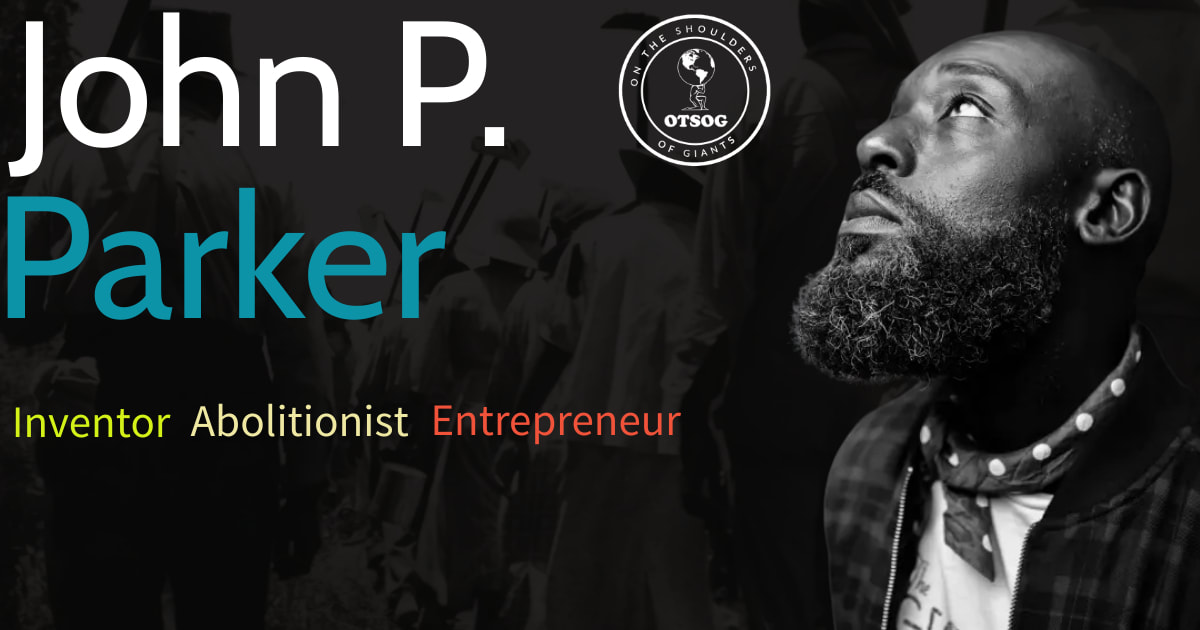
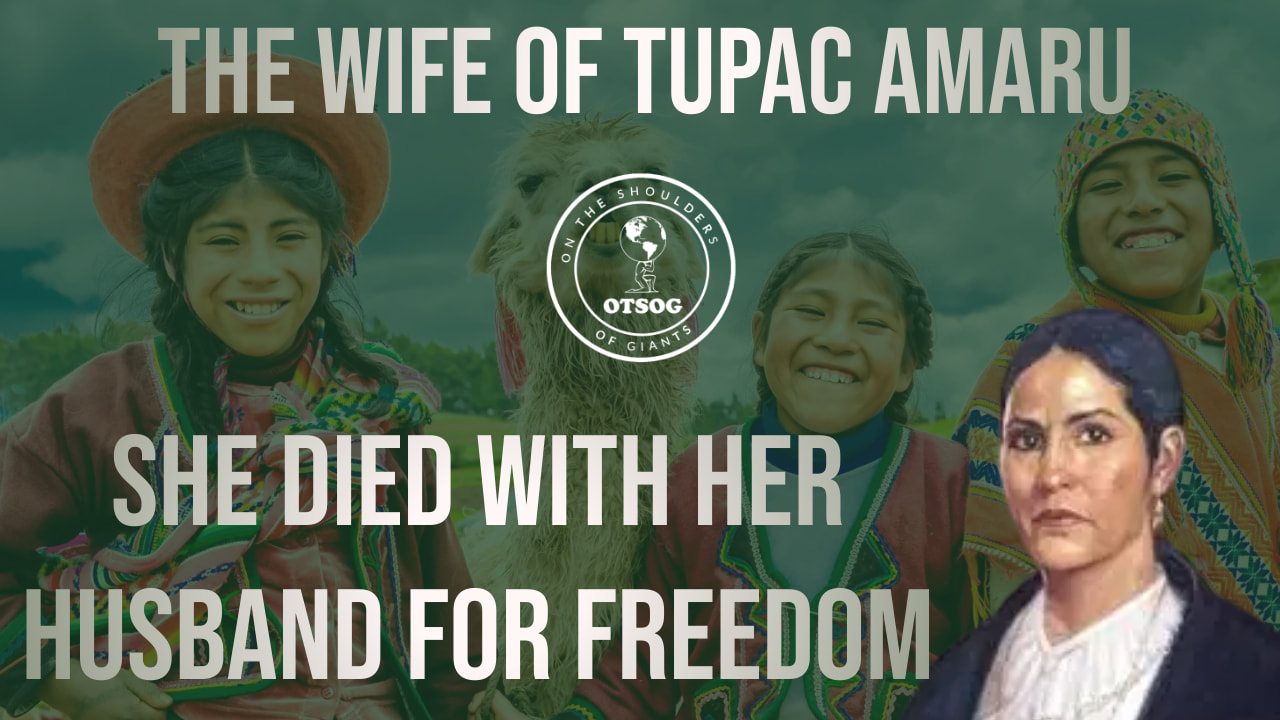
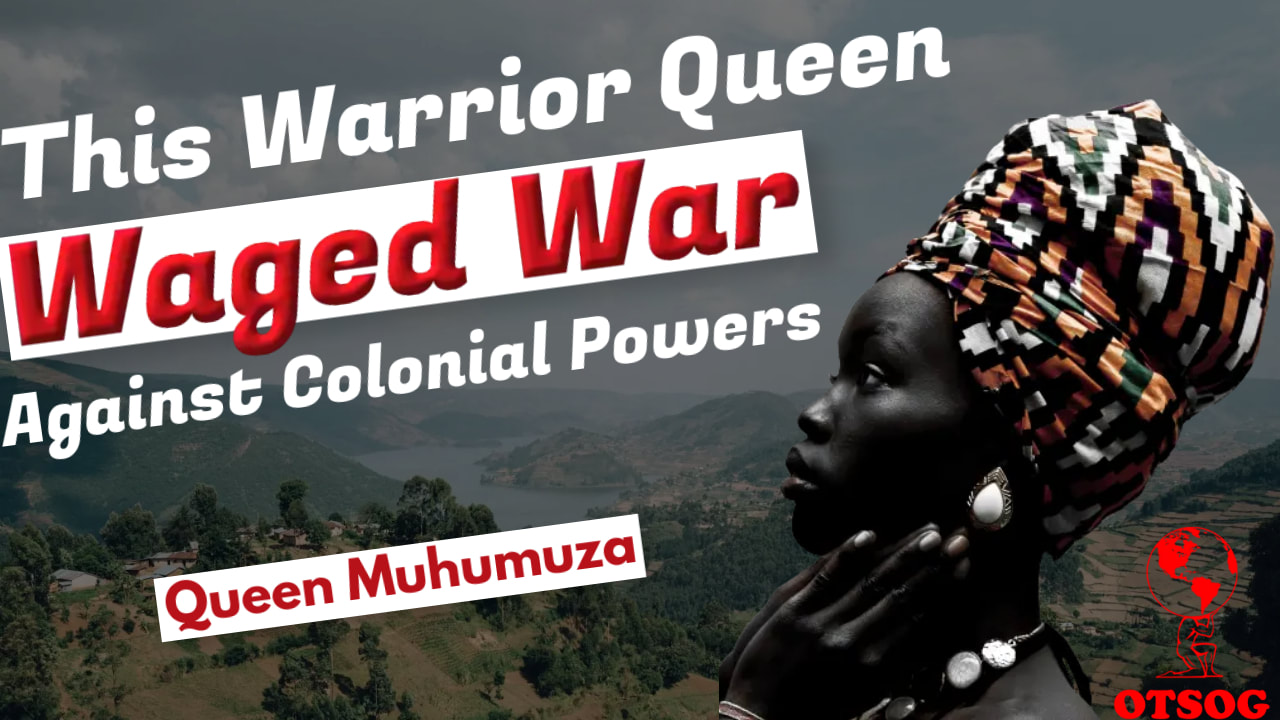
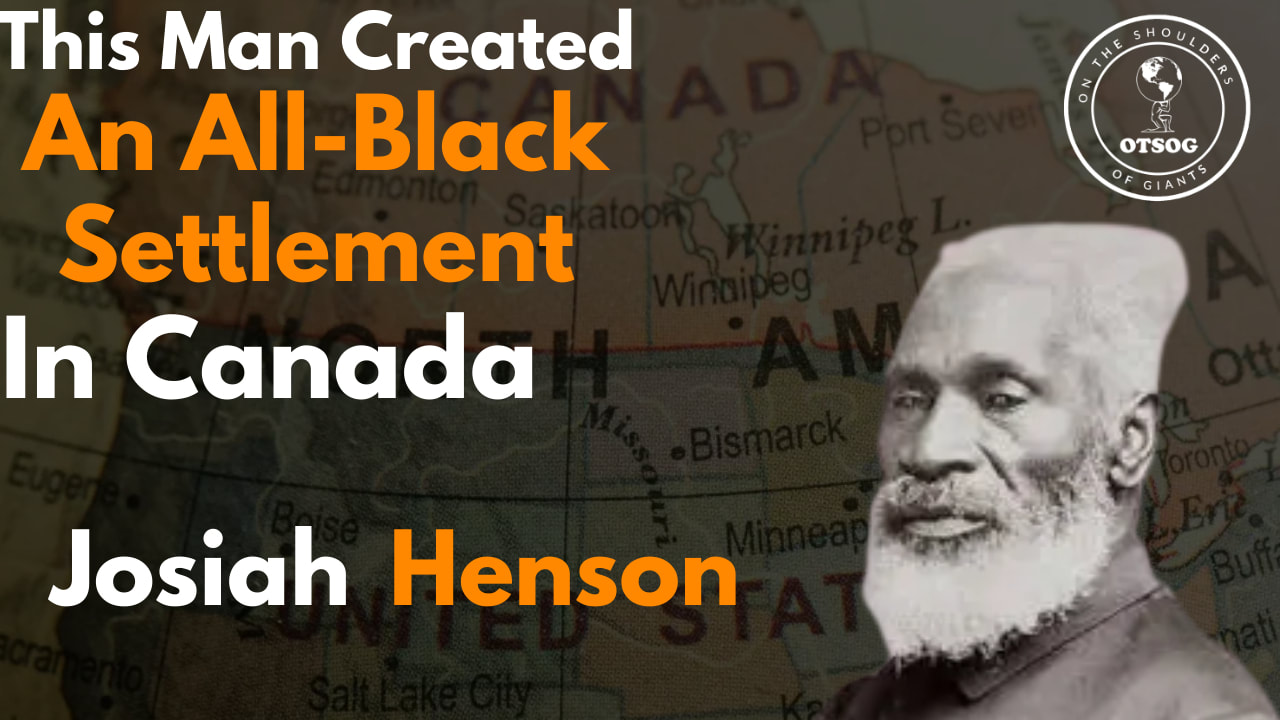
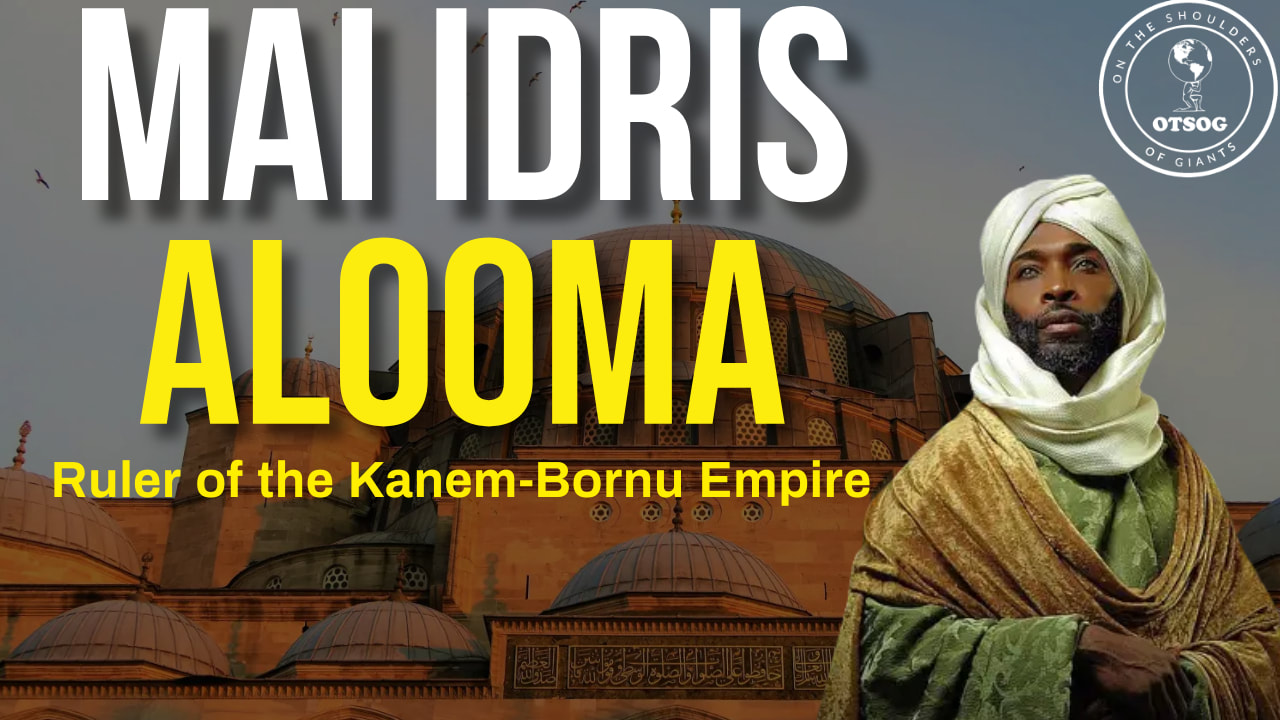
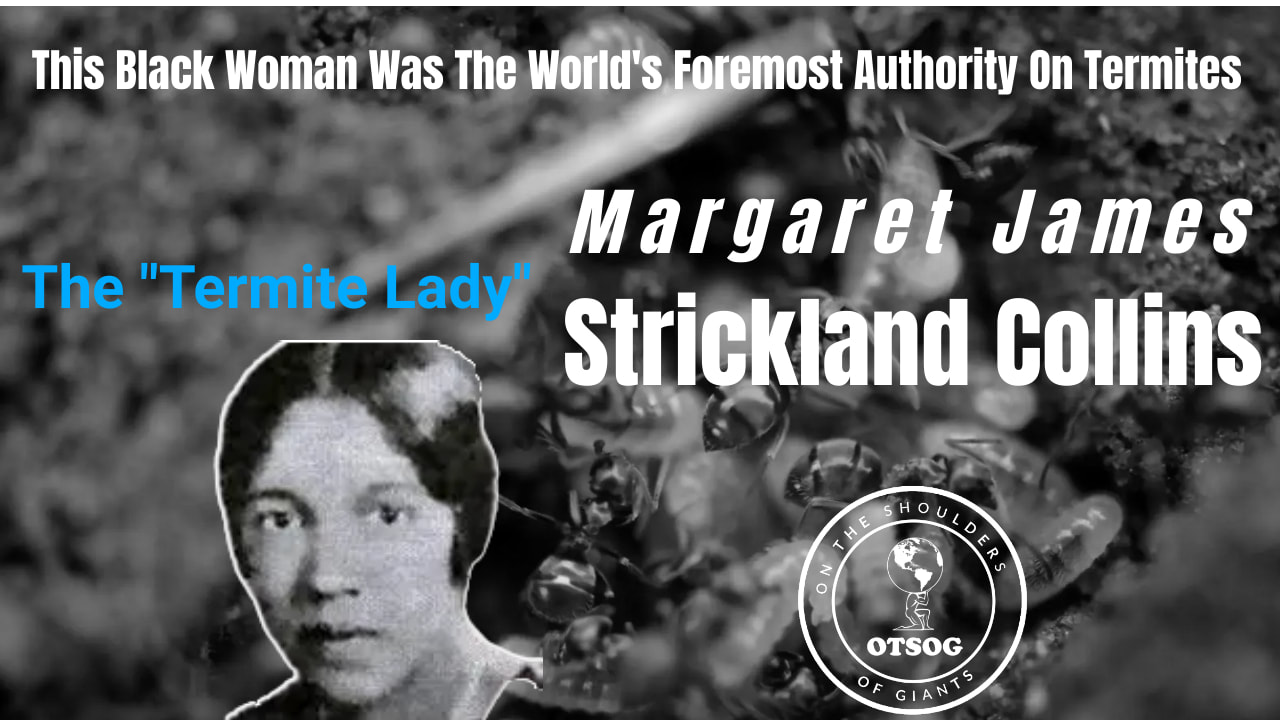
 RSS Feed
RSS Feed
